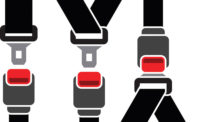The term “burnout” is used loosely to describe being worn out, exhausted, or frazzled. It actually refers to a specific work-stress-related syndrome that has a long history in the psychological research literature.
Psychologists began to pay attention in earnest to burnout as a distinctive syndrome in the mid-late 1970s. Three main facets characterizing the syndrome were identified: mental and physical exhaustion, feelings of depersonalization and cynicism, and reduced feelings of accomplishment and effectiveness.
Research ties burnout to depression (especially) and anxiety as a result of prolonged stress. But burnout is not (yet) identified as a clinical syndrome, a form of psychological disorder. Still, burnout has long been identified as a work-related problem. Indeed, the World Health Organization recently “officially” recognized burnout as a major work-related disorder, a specific syndrome resulting from long-term unmanaged stress on the job.
Who’s at risk?
Early studies of work-related burnout focused on jobs and careers that are especially emotionally demanding and people-intensive. Nurses, firefighters, EMTs, police officers, etc., deal with intense situations that can be life-threatening for themselves and/ or for the public they serve. More recent research has broadened the net, identifying burnout as an issue in many careers and jobs that are not so service-intensive and do not have obvious life-or-death consequences. Work overload and excessive job demands over which an individual has little control are triggers for burnout. Factory workers, sales reps, safety managers… even college professors… can be at risk.
Being bored, without enough important work to do or feeling unsupported at work (unclear expectations, no direction, uncommunicative boss), can also lead to burnout.
Risk factors
A recent study by the Mayo Clinic identified these risk factors for burnout:
- You identify so strongly with work that you lack balance between your work life and your personal life.
- You have a high workload, including overtime work.
- You try to be everything to everyone.
- You work in a helping profession, such as health care.
- You feel you have little or no control over your work.
- Your job is monotonous, or alternates between monotony and high activity.
I would add that individuals who are “Type A” perfectionists are more likely than others to experience burnout. They are prone to take on more and more work, and expect themselves to be able to handle it, no matter what. Their high standards cause them to put more pressure on themselves.
Early warning signs
Physical symptoms — Chronic fatigue. In early burnout stages, sufferers feel more tired than usual, even tired all the time. Their energy is at a low ebb. Sleep difficulties, including most prominently, insomnia, are intense and worrisome. Sufferers find it harder than usual to fall asleep and to stay asleep. Over time the sufferer is increasingly prone to stress-related psychosomatic disorders, from mild (headaches, frequent colds) to severe (ulcers, migraines, high blood pressure).
Psychological symptoms — Negative emotional states, especially heightened levels of depression and anxiety. Sufferers are prone to feel and express more frustration and anger than normal. They do not experience the positive emotions of joy and happiness as much as they used to. In terms of cognitive effects, sufferers find it harder than usual to concentrate and stay focused on task. They are more prone than normal to forget, and to make mistakes (of commission or omission).
Behavioral symptoms — Burnout victims are more prone to withdrawal and isolation, which can cut them off from social support — a strong buffer to burnout. Loss of appetite, or at the opposite end of the scale, overeating, also may occur. Diminished job performance is common.
These symptoms manifest in mild-to-moderate form at first, but over time become more intense. The burnout process is not sudden; its onset is gradual.
What to do?
It is obviously important to recognize and acknowledge early warning signs of burnout, and intervene before the syndrome is full blown. Increased self-awareness makes it is possible to rest more, exercise more, eat a healthier diet, create better work-life balance, and reach out for social support (which research shows is absolutely critical). “Cognitive reframing” is also possible. You think differently about your situation. It is easier to deal with “challenges” than it is to deal with “threats.” These coping strategies are vastly more effective than “self-medication” involving alcohol or drug use… or abuse. These “strategies” are common, but dangerous and ineffective.
Where possible, sufferers can break the cycle by “leaving the field.” They may be able to find a different, less demanding job. Fundamentally shifting the job and getting into a less demanding work situation where the individual has more control can break the pattern and offset the symptoms. But not every sufferer has such options. Many are trapped in a vicious cycle; they may be able to only buffer themselves physically, psychologically, and behaviorally as they “keep on keeping on.”
The dangers are profound when burnout reaches its extreme forms. It is essential that the affected individual seek help. Counseling can help, and most organizations offer access to employee assistance programs. But that can be a difficult choice for many professionals, due to perceived stigma. Still, with social support from professional counselors, and/or family and friends, combined with the kinds of positive coping strategies touched on earlier, even extreme burnout can be managed.
Burnout is a disruptive physical, mental, and behavioral health issue that impacts many in the modern workplace. But it is more than unpleasant and disruptive. Recent studies linking burnout to suicide risk indicate that controlling burnout can even be a matter of life and death.




